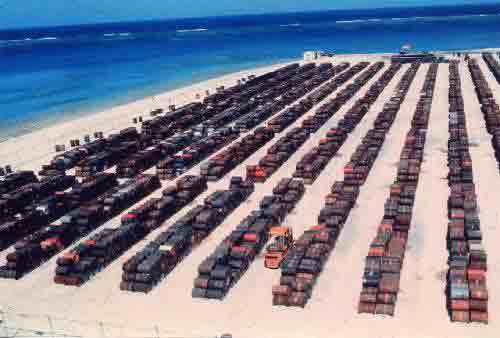






Johnston Atoll, atoll, 2.8 sq mi (7.25 sq km), central Pacific,
c.700 nautical mi (1,300 km) SW of Honolulu, central Pacific, an uninc. Territory of the
During the two decades of the 1950s and the 1960s,
the United States Air Force conducted a dozen nuclear-test launchings. Two of
these missiles exploded directly over the runway on

Chemical
weapons (Agent Orange and other
chemicals) have been stored on
In
1981, the Army began planning for the Johnston Atoll Chemical Agent Disposal System
(JACADS). Construction began in 1986. It is the world's first full-scale
facility built to destroy chemical weapons. The design is based on technologies
used for years by the Army and industry. Following completion of construction
and facility characterization, JACADS began operational verification testing
(OVT) in June 1990. From 1990 until 1993, the Army conducted four planned
periods of Operational Verification Testing (OVT), required by Public Law
100-456. OVT was completed in March 1993, having demonstrated that the reverse
assembly incineration technology was safe and that JACADS operations met all
environmental parameters. The OVT process enabled the Army to gain critical
insight into the factors that establish a safe and effective rate of destruction
for all munitions and agent types. Only after this critical testing period did
the Army proceed with full-scale disposal operations
at JACADS. Transition to full-scale operations started in May 1993. The
facility actually did not begin full-scale operations until August 1993.
In April 2001 the United States Army Chemical
Pacific closes and the clean-up of
It is my felling that anyone transporting or working
around or on these islands should have no problem filing VA claims for AO
caused problems. The above info is evidence to the presence of Agent Orange.
The United States Fish and Wildlife Service is scheduled to gain oversight of the island as a wildlife
refuge. It is not normal practice for a wildlife refuge to be established over
a plutonium landfill and there is still considerable concern that the
contaminants absorbed by fish could carry the threat elsewhere.

